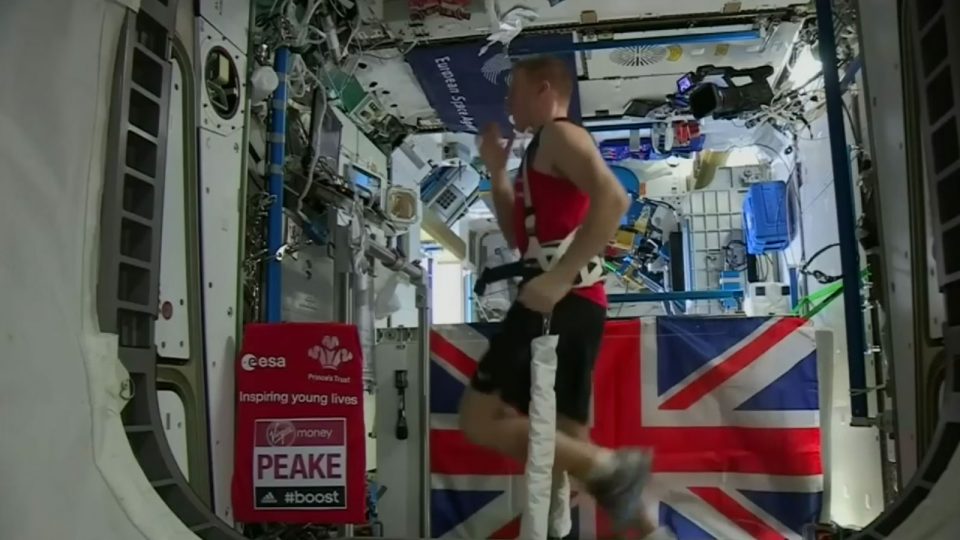What would you do during a six month stint in Space? British astronaut Tim Peake may not be the first person to get out of Earth but he became the first man to complete a marathon in space on 24 April 2016. He ran the 26.2 mile distance on a treadmill on board the International Space Station at 3:18:50.
Peake may not have been able to participate physically in the 36th edition of the London Marathon, Britain’s biggest mass participation race this year, but the 44-year-old spaceman was still able to enjoy the race together with 39,000+ more runners.
Peake kicked off the marathon with a video message from the space station runners to all the participants and also with a tweeted photograph of England’s capital from space accompanied by the message: “Hello #London! Fancy a run? :)”.
Hello #London! Fancy a run? 🙂 #LondonMarathon https://t.co/CvaUjUo7IU pic.twitter.com/SLckqOp8Gk
— Tim Peake (@astro_timpeake) April 24, 2016
Although Peake ended his race at a much slower time of 3:18:50, than the winner of the race, Kenya’s Eliud Kipchoge, who completed the race in 2:03:05, he had to be content with the challenge of zero-gravity in space.
He said that he use elastic straps over his shoulders and around his waist to keep him in contact with the running belt in weightless conditions as he ran.
To remain focussed and motivated, Peake watched the marathon live on the BBC, and used an app called RunSocial to view London’s streets in real-time.
RunSocial is a treadmill video app that aims to reduce the boredom of running on a treadmill. The video app allows users to run viewing HD videos of real running routes, now including the Virgin Money London Marathon route. Using mixed reality technology, runners can also see their friends and others (as avatars) who are also running live, wherever they are in the world.
While the timing is not Peake’s fastest time, he was glad that the run went better than expected when he wrote on a blog post.
The run went better than expected. I thought I’d stick to a steady 7.5 mph, but when I got to 10 miles I realised that my legs were feeling OK but my shoulders were beginning to hurt, so I needed to finish the run quicker than planned and running faster doesn’t seem to hurt the shoulders any more – in fact I think the longer stride made it less painful on the shoulders.
Peake further commented that he was grateful to everyone at the European Space Agency and NASA who enabled him to have an incredible experience to take part in such a prestigious event whilst orbiting the planet on the International Space Station as he runs to raise awareness for The Prince’s Trust.
Peake may be the first man to complete a marathon in space but he is not the first person. US astronaut Sunita Williams has beaten him in history in 2007 when she completed the Boston Marathon in 4 hours and 23 minutes while in orbit.
Peake is scheduled to return on 5 June 2016.





